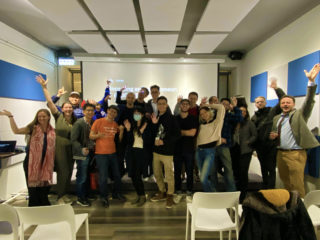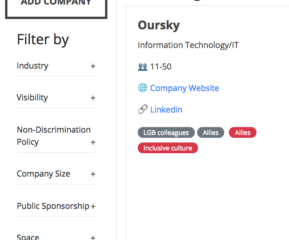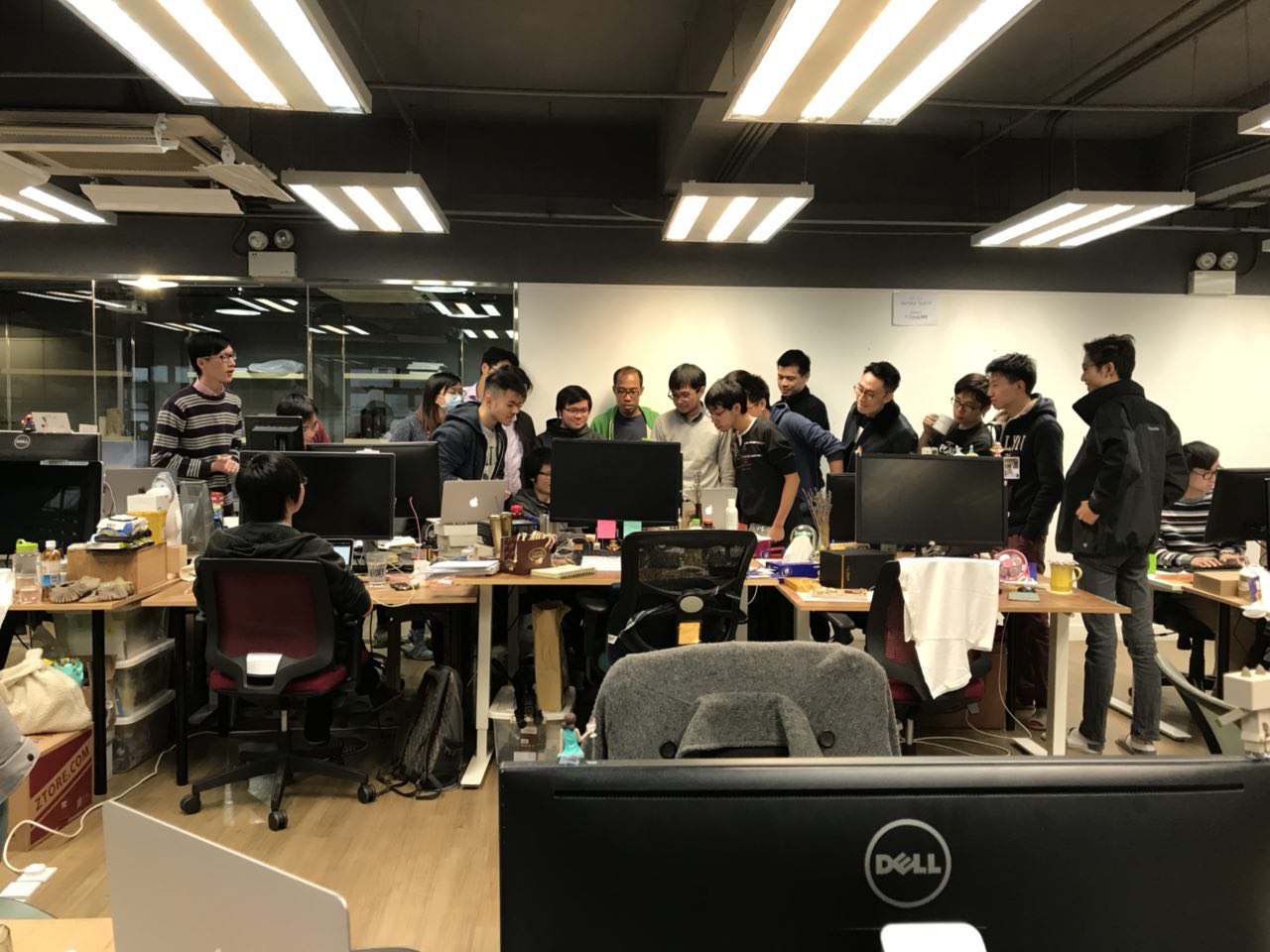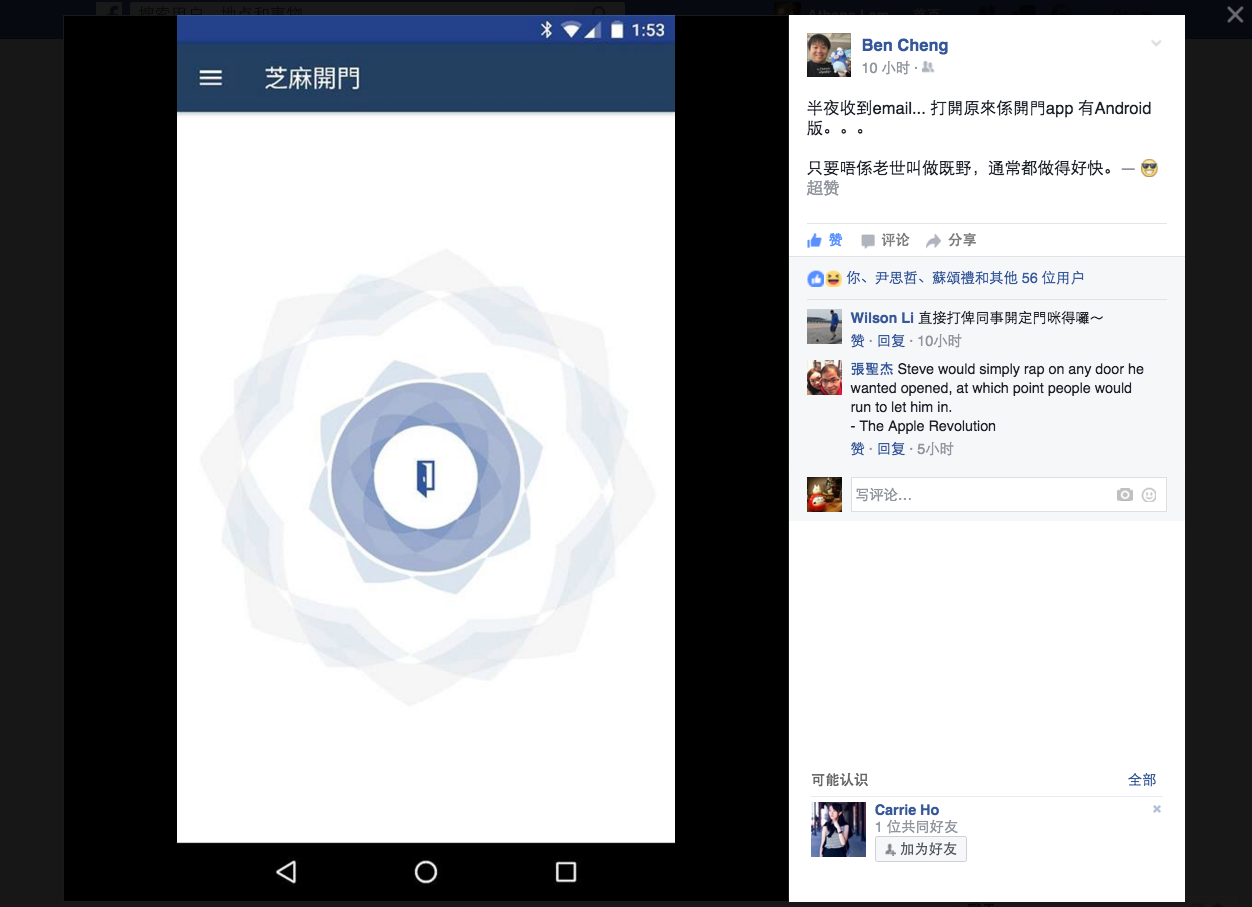
“As long as it’s not something your boss told you to do, the job gets done so fast.” Recently, I joked about one of our new side projects, Chima Open Door, on Facebook.
This post is about our latest side project, Chima Open Door, why I support my team to pursue their own projects, and how projects like this benefits Oursky as a company.
1. Oursky’s real CEOs
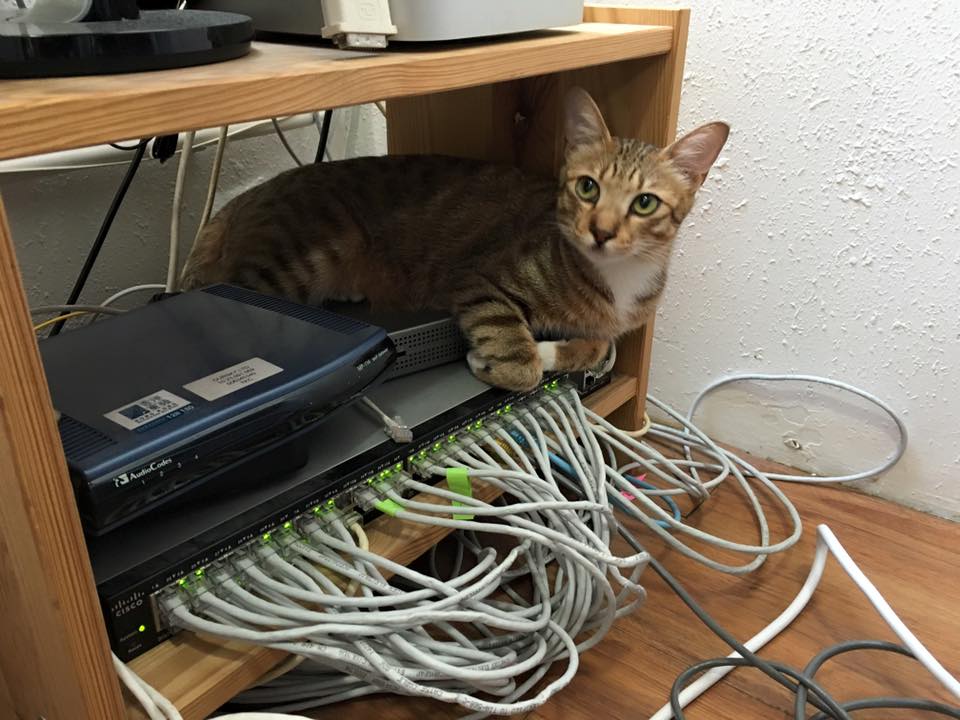
Chima (sesame) and Fasang (peanut) are our black and orange tabby cats – the real CEOs of the company (Coffee and Milk tea recently joined, too). Chima and Fasang have been Oursky’s most popular mascots since they were adopted two offices ago (here’s their dedicated Facebook page). After we made sure no-one was against having cats, one team member took the lead in adopting them. That meant they came in every weekend to feed them too.
Since then, they’ve been an inspiration to our team. They’ve given our company an approachable character, appeared in greeting cards and often on our Facebook and Tumblr accounts.
By the way, Chima Open Door is Chinese for “Open Sesame” (芝麻開門).
2. Cats, Code, Company
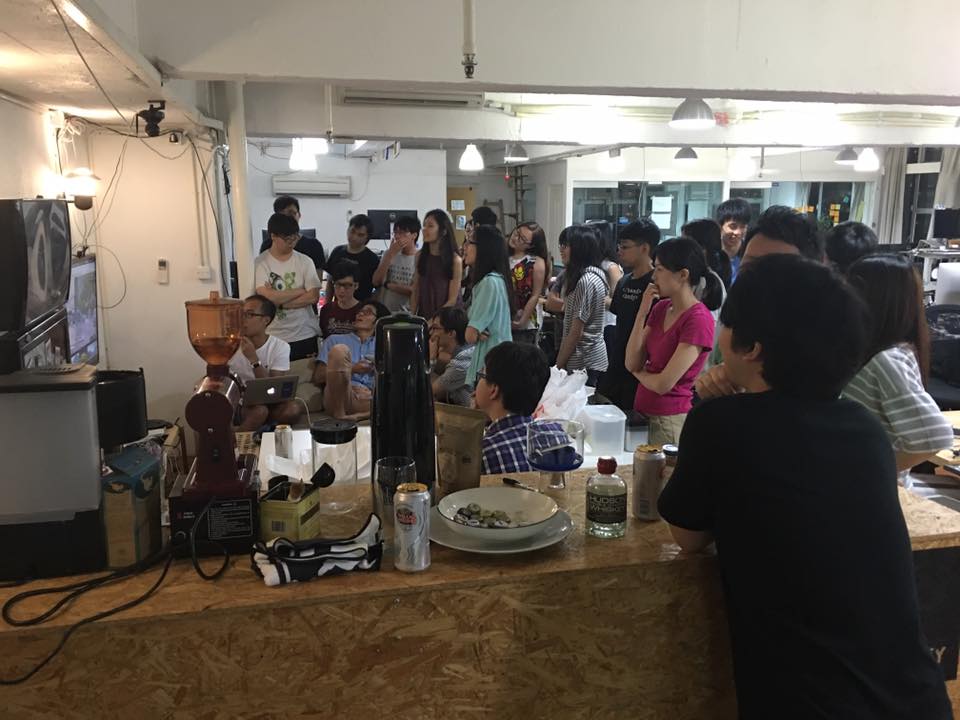
Our cats show how we work as a team. We try to be as transparent as possible. Our salary system is open in the company’s wiki (Quip). All the team’s timeline is openly shared and we integrate our Trello and Github updates into our Slack channels. We try to make decisions and communicate within the team as much as we can, which is why we have discussions in open Slack channels not private messages. In this open environment, it’s easier for people to propose ideas.
3. Paying you to do more of what you love
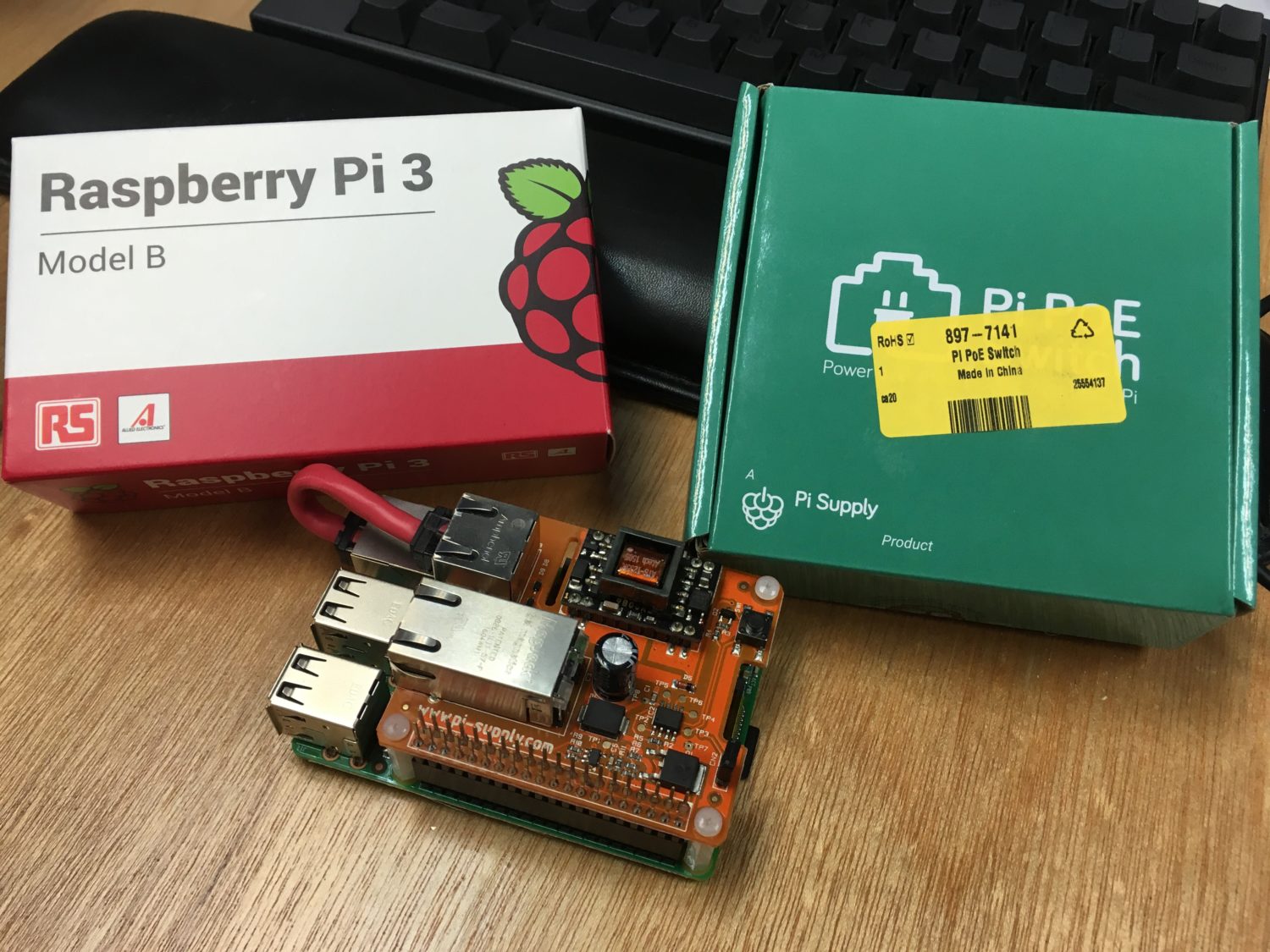
Benefits and team culture are part of the same thing, not add-ons. Many of Oursky’s benefits help our developers and staff do more of what they love. For example, our colleagues who opensource their projects can host on our company Github.
For Chima Open Door, one of the staff approached me and asked if the company would sponsor a Raspberry Pi. Of course, I said yes. When it started, I wasn’t involved, but other team members got interested.
Oursky develops web and mobile products for clients. We have long term partnerships and prefer products which are interesting or meaningful. Many of the technical problems are interesting, but it still sometimes feels like a job. That’s why if a team member takes the initiative to do a dev-related side project, we usually don’t say no.
4. Bottom-Up Product Inspiration
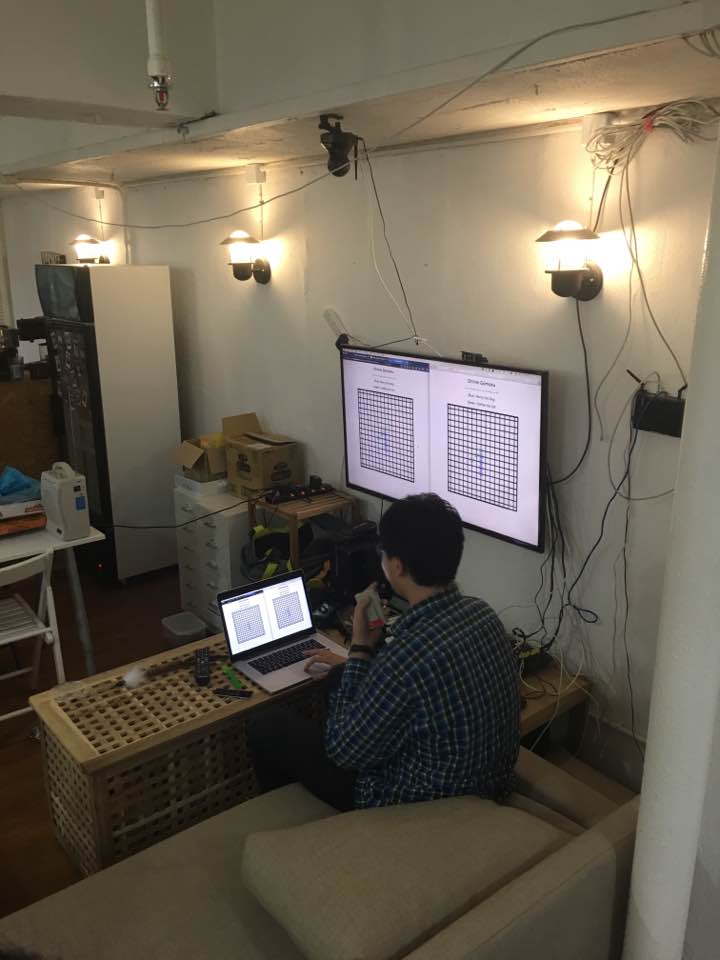
Great things often come bottom-up, not top-down. Our side projects are side-effects of our company culture. For example, one of our interns writing documentation for Skygear used the open-source BaaS to create a real-time multiplayer Gomoku game as an example. Our team thinks about use cases and has the freedom to create them.
Our intern demoed Gomoku at one of Oursky’s weekly Friday open sharing sessions. Our sharing sessions aren’t just tech related – they can be on anything someone is interested in. All this supports curiosity, learning new frameworks, sharing, and getting input from others.
My team always surprises me with new things. It makes work more fun, even for me!
5. Our staff use company products.

When Steven wanted to do a door app, I jumped in and asked if he was going to use Skygear. The best way to improve our products is if we are using them ourselves. A door lock is simple enough. At the same time, it also showed our Skygear dev team how their product sped up development of IoT / mobile applications. Self-initiated projects turn us into users with real use cases rather than just QA Testers.
6. Solve real problems
What I like about my company is that everyone is a problem-solver. They look at things thinking about optimization and everyone openly discusses ideas in the back of their minds.
That mindset helped us make tools for ourselves, such as Shotbot and MakeAppIcon because we needed to do renders of icons and App Store preview images for our own clients. We also created Gitlo to help our dev team sync between Trello board actions and Github issues tracker. After we finished, rwe discovered that other developers wanted the same tools too!
7. Brings the team together

For Chima Open Door, Boris worked on the hardware and Steven worked on the software. Frank, our lead designer, helped a bit with the UI. For a side project, the contribution is small, but it still feels good to pitch in. Plus, everyone can see what other people are interested in beyond the work they have to do. People can opt-in to teams based on interest and they appreciate each others’ skills more.
8. Everyone in the company benefits
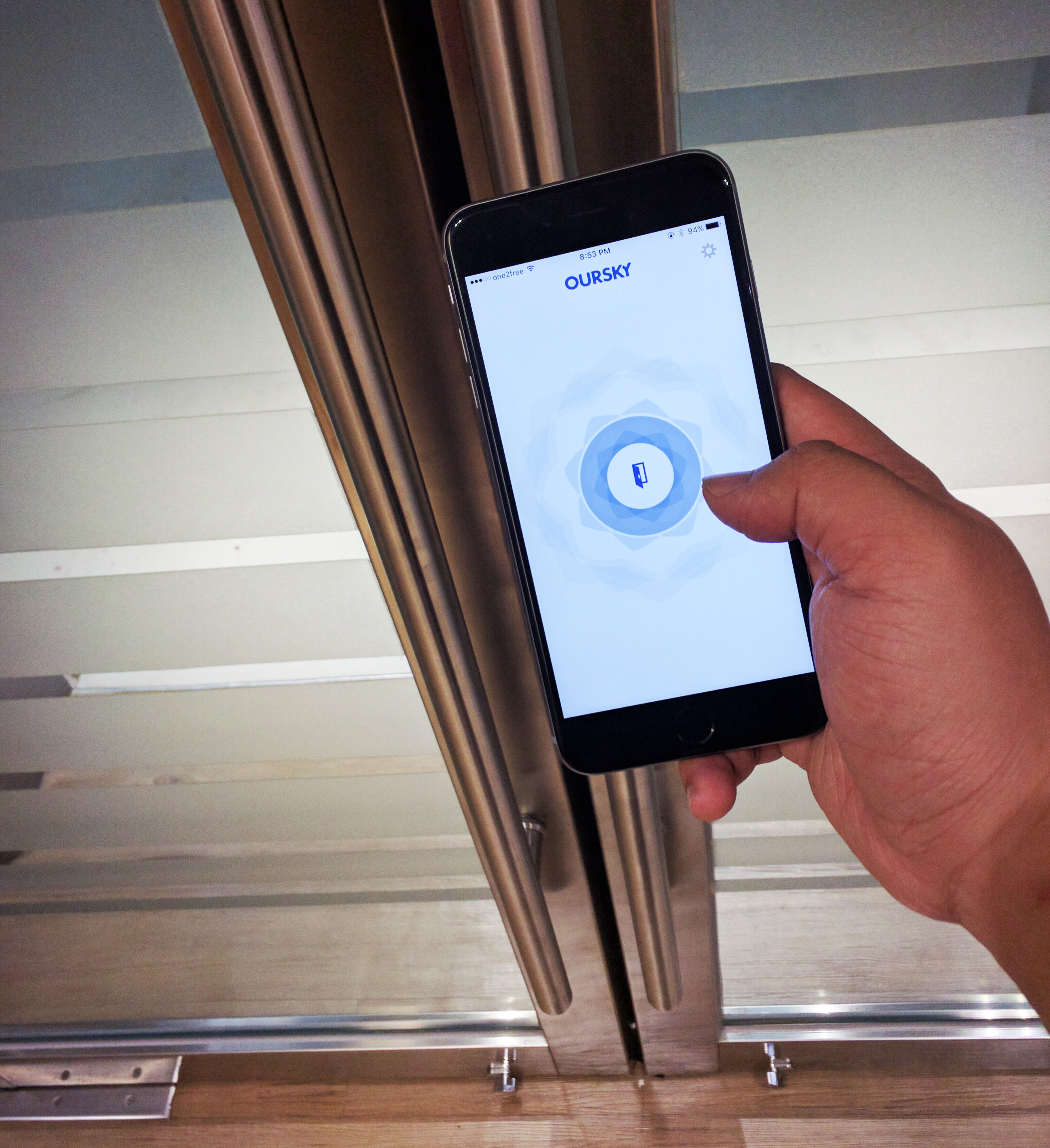
Everyone benefits from small projects like this. It took less than a week to put together. Now, everyone can use the app. In fact, decisions about Chima Open Door has taken over our general Slack channel (latest vote are the cat meow doorbells).
By the way, if you’re thinking of doing a side project, check out this piece.
9. Ownership keeps our people going
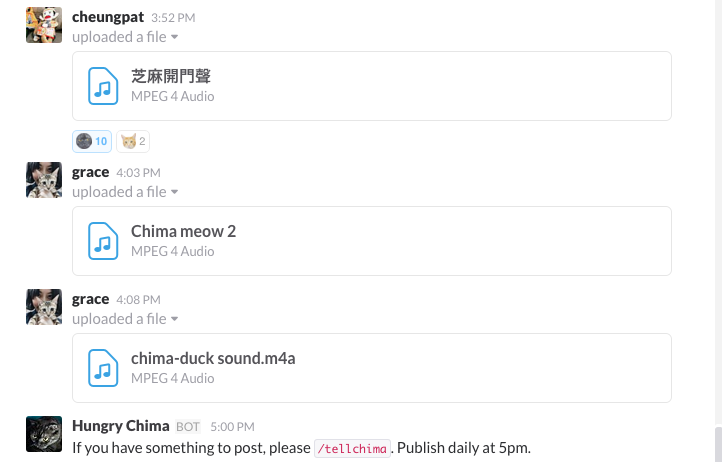
The side projects also create ownership. Some of our team members love the startup hustle, which they can be a part of for our in-house products. When our products generate buzz, the positive feedback boosts our team member’s confidence even if they don’t always monetize (the cats). By taking initiative and owning projects, everyone can lead in something they like. Leading is one of the best ways to learn.
10. Side projects generate some good revenue
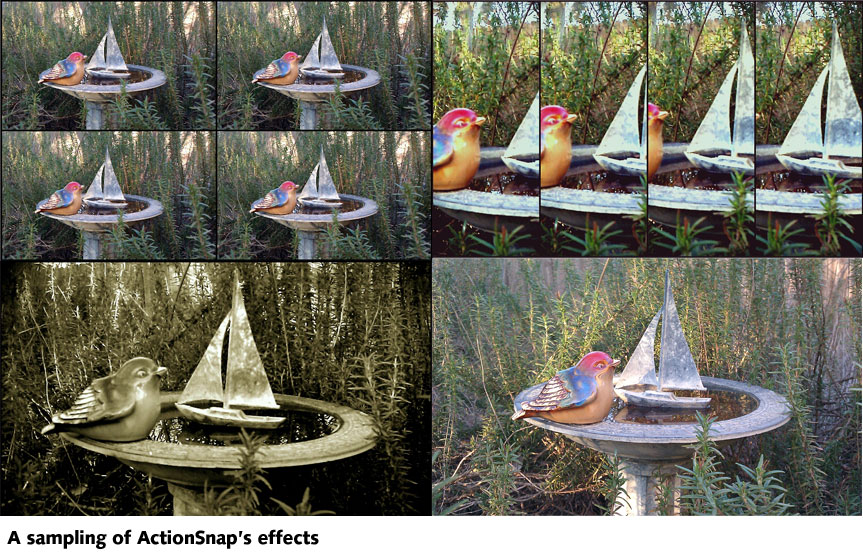
Our first profitable side project came in 2012, when we developed ActionSnap, which got 3 million downloads in a few months. MakeAppIcon also generates some advertising and sales revenue. While monetization is never the first goal of a side project, we don’t want to miss an opportunity either! Making a side project profitable is a way to keep our team members working on what they like too.
This company side project was another reminder of what a boss can’t do: force people on a team to want to work all night. But, seeing Chima Open Door’s Android app at midnight also means I have a team that’s passionate about code and making products.
Also, if you’re interested, we’ve shared our Doorlock Repo on Github.
Earlier this year we also open-sourced a much bigger side project, Skygear.io, which is an internal Backend as a Service (BaaS). Now we’re trying to monetize it with support and hosting packages. God knows what will happens next! Give it a try for free!


